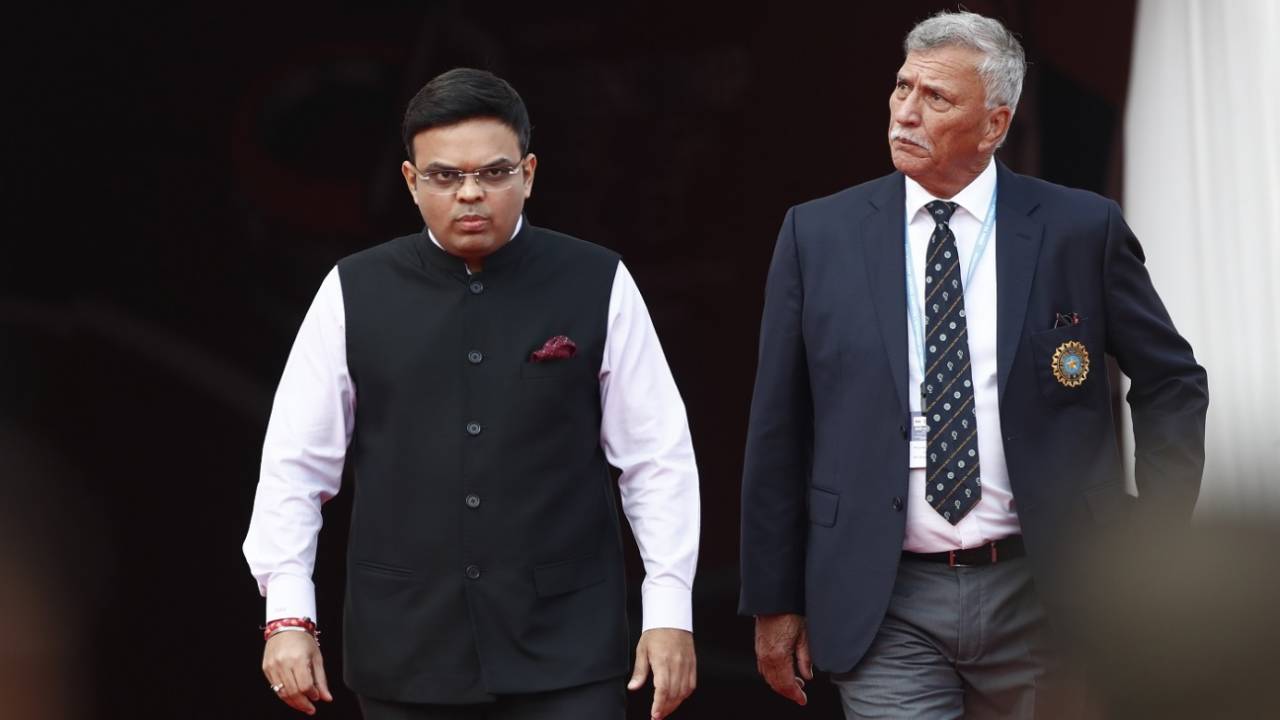The ICC board has approved a revamped revenue-distribution model which will see the BCCI take home nearly 40% of the ICC's annual net earnings in the next four-year commercial cycle from. The BCCI will earn close to US$ 230 million annually from 2024 to 2027 - or 38.5% of ICC's approximate annual earning of US$ 600 million - while none of the other 11 Full Members have a share in double digits in terms of percentage. The 90-plus Associate Members will share approximately US$ 67.5 million per year.
The distribution model remains mostly the same, though there is a tweak to the draft model that will see an increase in revenues of about US$ 1 million per year for a middle band of five full members: CSA, SLC, BCB, NZC and CWI. The biggest earners in the new model after the BCCI are the ECB, CA and the PCB.
Though some boards - lead
among them the PCB - had initially raised questions about the workings underpinning the model, it was always expected that the absolute increase in revenues across all Full Members (rather than the percentage shares) would keep those objections from becoming disruptive. A change in the PCB's leadership since then has also played a part.
The new model was developed originally by an ICC team and then worked on by the governing body's finance and commercial affairs (F&CA) committee. It was first shared with members at an ICC board meeting in March though only some details of the model were revealed then, including the criteria by which each Full Member would be graded when the distribution was calculated. The paper detailing the proposed model was circulated to the Full Members and board directors thereafter.
The criteria - "component weightings", as they are called in the model - are: cricket history; performance in both men's and women's ICC events over the last 16 years; contribution to the ICC's commercial revenue; and an equal weightage for the status of being a Full Member
Much of this comes from the primer drafted nine years ago by the Big Three. Back then, another F&CA working group (led by the BCCI, ECB and CA) drafted a "position paper" detailing a proposed revamp of the ICC's administration and distribution of its earnings. A major focus of that paper was the distribution costs - the revenue each member would receive - through a graded percentage share, worked out by a "marked scoreboard method". That scoreboard was also based on four parameters: revenue contributed to the ICC, historical membership with the ICC, on-field performance over past 20 years in men's and women's competitions, and domestic development performance.
There are, however, slight differences in this proposed model. Here, every Full Member starts on equal footing, listed to receive an 8.3% share for being a Full Member. But the "effective percentage" each will receive ultimately is based on an average weightage of all four criteria and it quickly changes based on the other three parameters. The key criterion is the commercial value each board brings to the global pot, which is where the scales tilt heavily in favour of the BCCI.
This model gives a commercial weightage of 85.3% to the BCCI. Although the document that ESPNcricinfo had seen doesn't explain how this is worked out, this percentage is in the ballpark of a commonly cited figure, which says that the Indian cricket economy contributes anywhere between 70-80% of the total cricket economy. That approximate figure is bolstered by the nature of the ICC's next media rights deal which, over four years, is believed to be second only to the IPL in cricket. Its value is considerably greater than the $2.1 billion (approximately) the ICC got (from around the world, not just India) from the previous rights cycle, which ran over eight and not four years (2015-2023).
The ICC decided to sell this batch of media rights in different territories globally in the 2024-31 cycle in order to maximise and exploit the commercial value of its world events. The value of the rights in India alone (just over $3 billion) towers over other territories, especially two key markets in the UK and USA. In the UK and Ireland, Sky Sports inked a direct deal with ICC for eight years (2024-31) with an estimated value understood to be close to $260 million. Willow TV secured the four-year rights to broadcast ICC events in the USA and Canada for an undisclosed sum, but it is believed the number fell well short of the expectations the ICC had.
The overall figure from rights will be higher ultimately, because it doesn't yet include the sponsorship and commercial revenues the ICC will generate from the global events, which could go up by another $1 billion-plus.
Nagraj Gollapudi is news editor at ESPNcricinfo
